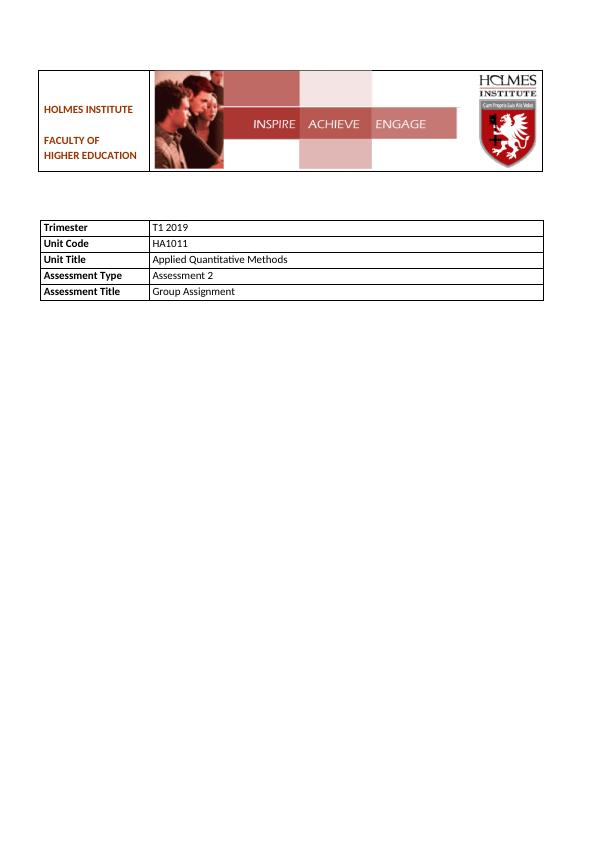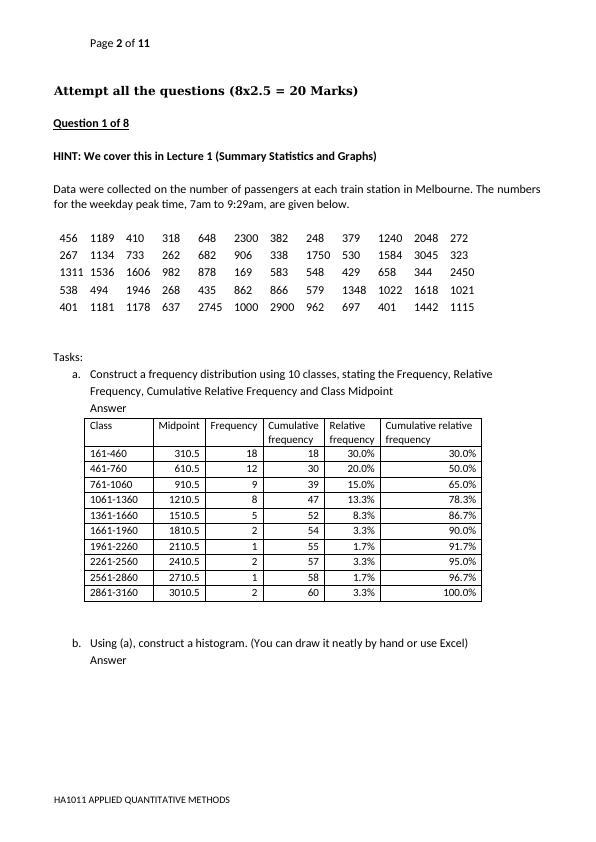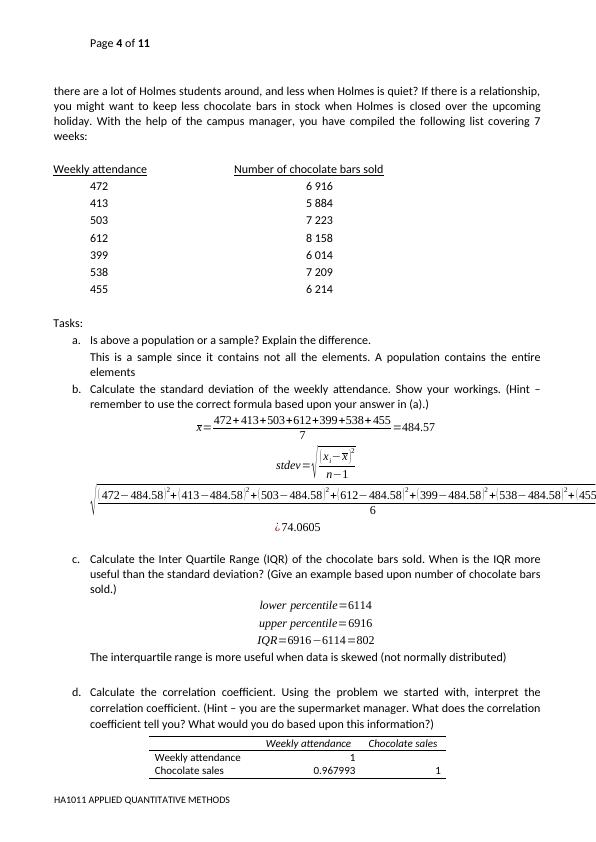Applied Quantitative Methods Group Assignment
This group assignment requires students to demonstrate their understanding of business research principles and statistical analysis techniques taught in the course.
11 Pages2762 Words211 Views
Added on 2023-03-31
About This Document
This document is a group assignment for the subject Applied Quantitative Methods. It includes questions on constructing a frequency distribution, calculating mean, median, and mode, analyzing the relationship between variables using correlation and regression, and calculating probabilities. The assignment is for the HA1011 unit at Holmes Institute.
Applied Quantitative Methods Group Assignment
This group assignment requires students to demonstrate their understanding of business research principles and statistical analysis techniques taught in the course.
Added on 2023-03-31
ShareRelated Documents
End of preview
Want to access all the pages? Upload your documents or become a member.
Applied Quantitative Methods - Desklib
|11
|3349
|195
HA1011 Group Assignment - Summary Statistics, Measures of Variability and Association, Linear Regression, Probability
|16
|3727
|132
Desklib Online Library for Study Material with Solved Assignments
|16
|4235
|424
HA1011 Applied Quantitative Methods Assignment
|5
|2078
|285
Statistics Table of Contents InTRODUCTION 1
|15
|3021
|267
Sample Assignment on Statistics
|13
|1363
|41




